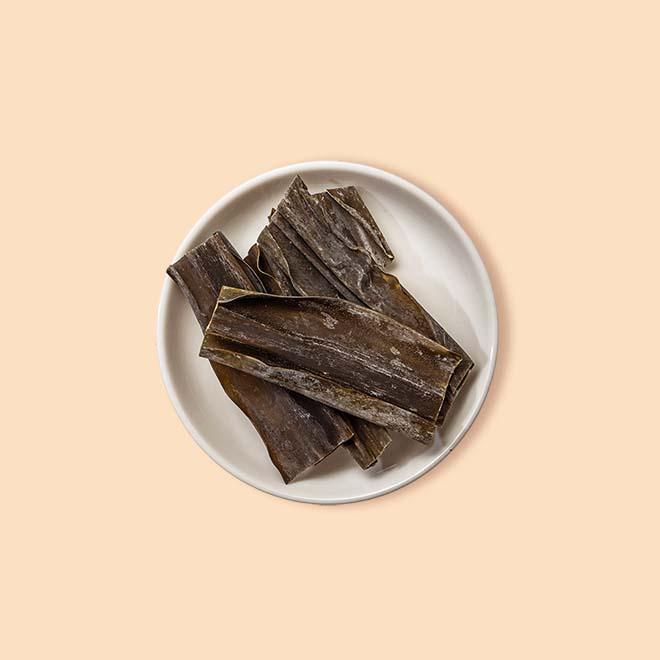Kombu




Kombu is a type of edible kelp, which is essentially a large and brown seaweed! It's widely used in East Asian cuisine, particularly in Japan, Korea, and China. It is often sold dried, as sheets or strips, but can also be found fresh or pickled.
Kombu is available in different varieties, like ma-kombu, rausu-kombu, and hidaka-kombu, each with slightly different textures and flavors.
Archaeological evidence suggests the use of kombu in Japan as early as the Jomon period (15,000-2,300 years ago). However, written records only appear around the 8th century. Kombu plays a vital role in Japanese cuisine since the foundational broth “Dashi” is always made using kombu.
When buying kombu, choose from dried sheets (most common), strips, or even ground kombu powder for easier use. Different varieties like ma-kombu (thick) and rausu-kombu (delicate) offer unique textures and flavors. Check Asian markets, specialty stores, or online retailers for quality kombu. Inspect for dryness, no mold or discoloration, and a pleasant seaweed aroma. Avoid kombu with excessive white powder (natural salt), as it might indicate age.
Keep the unopened dried kombu in a cool, dark, and dry place like a pantry. Avoid sunlight and humid areas. A sealed, airtight container is ideal. Once opened, transfer the unused kombu to an airtight container or resealable bag to prevent moisture and flavor loss. Keep it in the pantry or a cool, dark cabinet. When storing fresh kombu, it’s best to keep it in the refrigerator wrapped in a damp cloth or paper towel. Use it within a few days for optimal freshness.
Ground kombu should be stored in an airtight container in the pantry or refrigerator. It absorbs moisture easily, so ensure the container is tightly sealed.
Kombu is rich in minerals and polysaccharides, which can have hydrating and softening effects on the skin. Soak a small piece in water, then use the gel-like liquid as a natural, seaweed-infused moisturizer.
Kombu is also a great natural fertilizer. Soak a kombu sheet in water and dilute the liquid to use as a natural fertilizer for your houseplants or garden. The seaweed nutrients can promote healthy plant growth.
Kombu is famed for its rich, savory umami taste, thanks to the naturally occurring glutamic acid it contains. It boasts the highest concentration of iodine among all seaweeds, making it a potent natural source of this essential mineral crucial for thyroid function. Just a small serving can fulfill your daily iodine requirement.
Kombu contains an enzyme called glutamic acid that acts as a natural meat tenderizer. Adding a kombu strip to stews or cooking beans alongside kombu can significantly shorten cooking time and improve texture.
Soak kombu for at least 30 minutes before using it in dashi for maximum flavor and extraction.
Don't boil kombu for too long, as it can become bitter. Aim for around 10-15 minutes for dashi.
Kombu can be reused several times for dashi, just keep adding fresh water and simmering.
Beyond umami, kombu is a treasure trove of vitamins and minerals. It's rich in iodine, calcium, iron, magnesium, and vitamins A, C, and K, making it a valuable addition to a healthy diet.
Kombu contains enzymes that break down complex sugars in beans and other legumes, making them easier to digest and reducing gas production.
Corrections or improvements? Email us at
content@sidechef.com